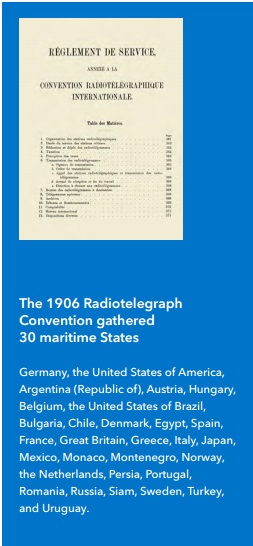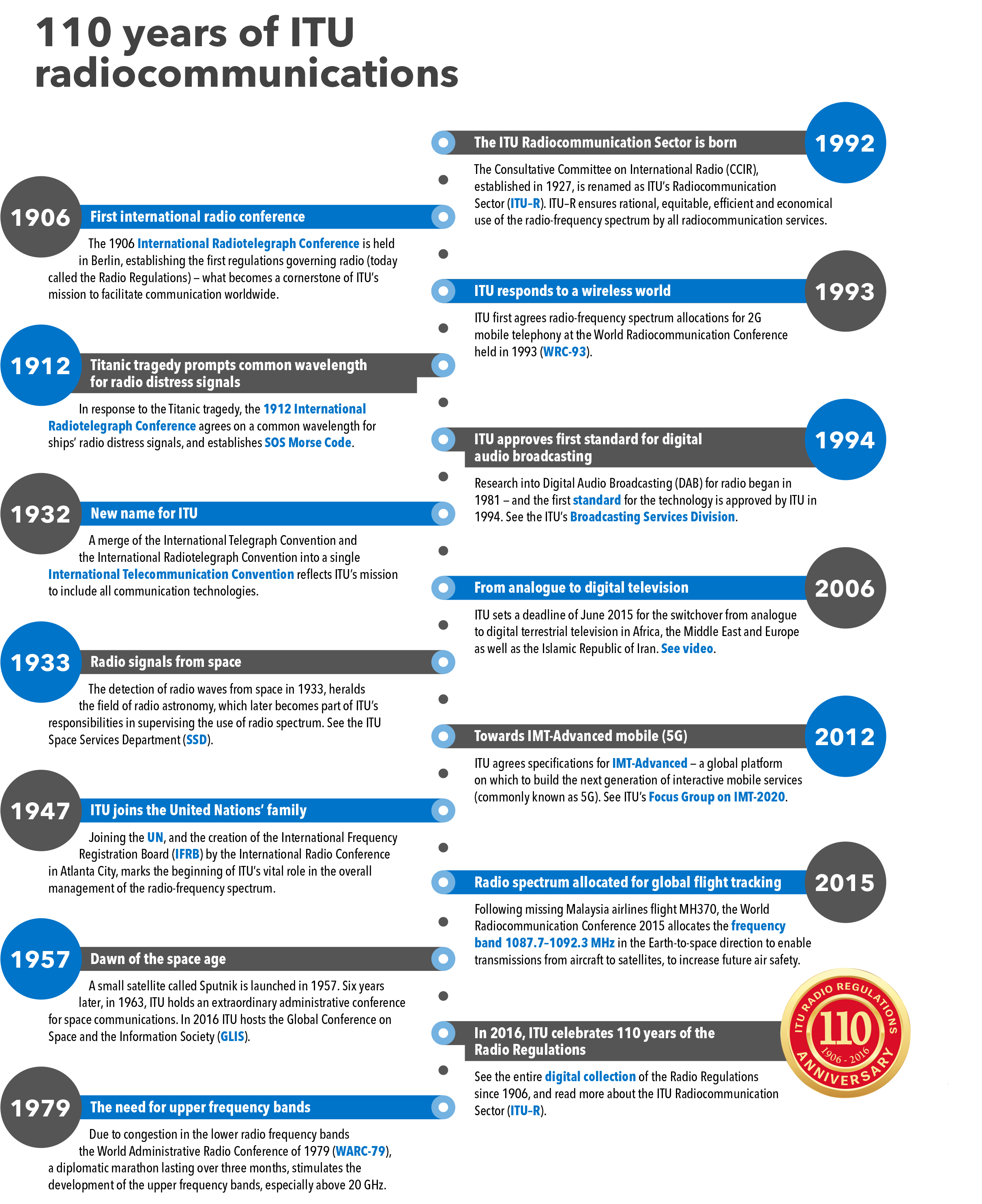During this month of December we are celebrating the 110 years of existence of the ITU Radio Regulations — the essential international treaty governing the use of the radio-frequency spectrum and satellite orbits for ubiquitous wireless communications. The ITU Radio Regulations ensure interference-free operations of radiocommunication systems and provide all countries with equitable access to the radio spectrum — a scarce natural resource that does not distinguish national borders and needs to be harmonized globally. In an increasingly “wireless” world, the Radio Regulations enable all radio services to share the spectrum while satisfying their evolving requirements, protecting incumbents, and providing high-quality services to an increasingly growing number of users and applications. Since the early 1900s, the management of the radio-frequency spectrum and the regulation of its use have been major functions of ITU. In their role as global spectrum coordinators, ITU Member States have developed, and are constantly updating, the Radio Regulations. The first set of international regulations, drawn up in 1906, mainly concerned maritime radiotelegraphy. The 1906 Radiotelegraph Convention gathered 30 maritime States on 3 November 1906 in Berlin for the first International Radiotelegraph Conference, and adopted the “International Radiotelegraph Convention” establishing the principle of compulsory intercommunication between vessels at sea and in-land stations. The Annex to that Convention contained the first regulations governing wireless telegraphy.

Today’s Radio Regulations apply to some 40 different radiocommunication services around the world, and cover frequencies ranging from 9 kHz to 3000 GHz. They now include over 2000 pages specifying the governing principles, as well as the rights and obligations of ITU’s 193 Member States in using spectrum and satellite orbit resources efficiently, and in a coordinated manner, so as not to cause harmful interference to each other. Since 1906, 38 World Radiocommunication Conferences have revised the ITU Radio Regulations to respond to technological and social development. The 2016 version, which was adopted by the World Radiocommunication Conference 2015 (WRC-15), is now available online. Over the last 110 years, the Radio Regulations have proven to be a perfectly suited instrument to govern the use of the frequency spectrum and satellite orbits, based on international cooperation and mutual understanding. With the growing complexity of our interconnected world and ubiquity of wireless systems, it is now more important than ever to maintain the pace and efficiency of radiocommunication conferences, to ensure the timely and responsive evolution of this precious instrument.
